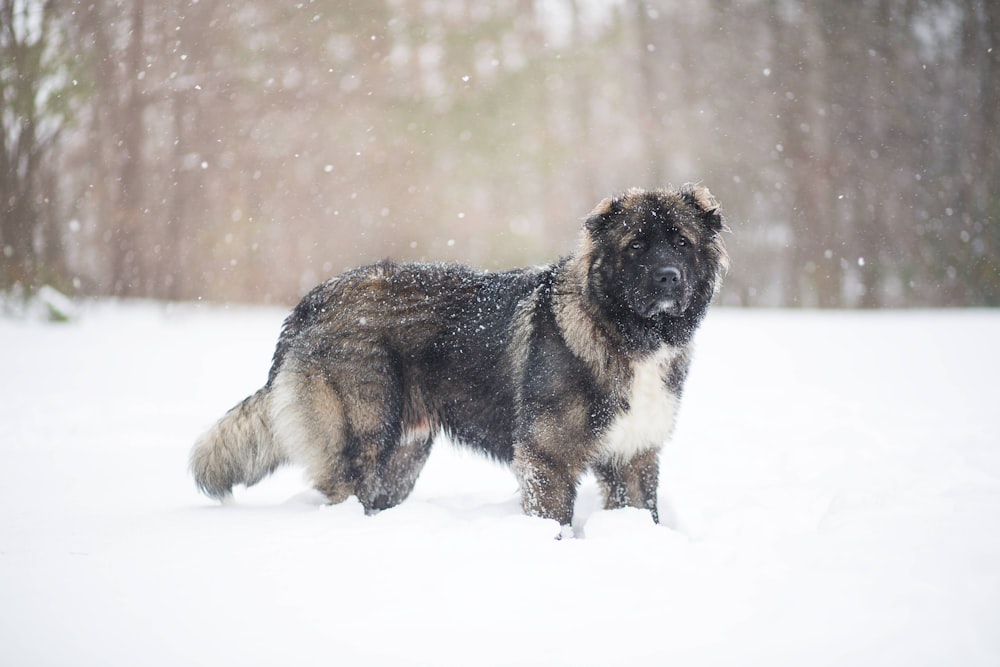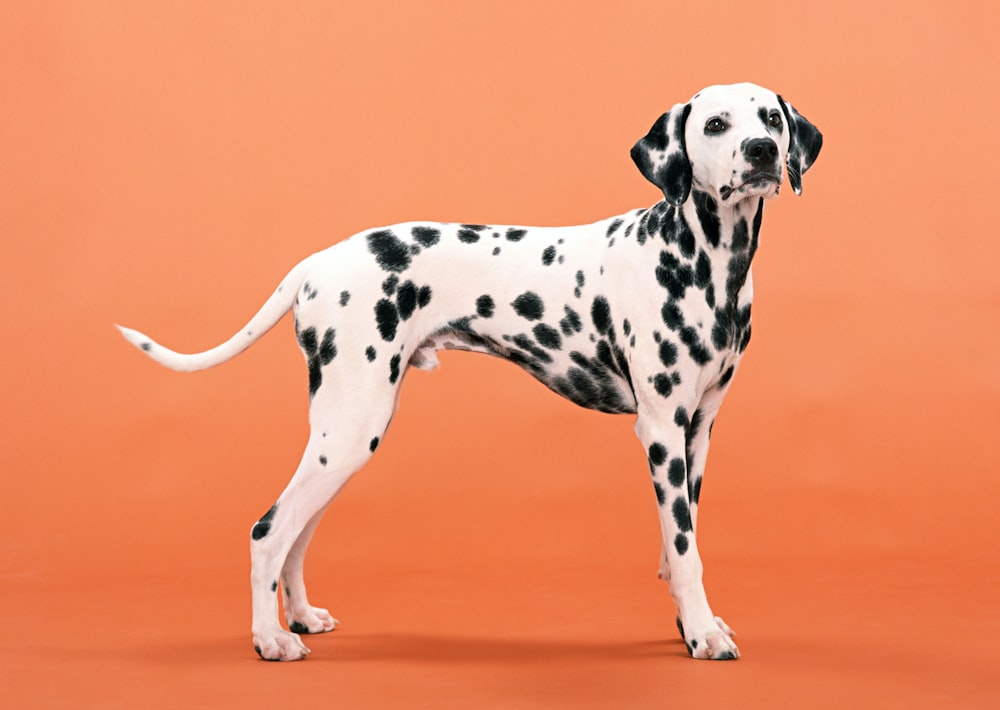If asked, many dog people have a specific breed or size of a dog that they prefer. Some like giant breeds they can practically use for transportation, while others enjoy tiny dogs that fit comfortably in their lap or purse. For those who want medium and large dogs, here we delve into the fascinating origins of five of our favorite medium and large dog breeds and how they came to be.
Origins of Large Dogs

Caucasian Ovcharka
The Caucasian Ovcharka means Caucasian Shepherd Dog in Russian. This breed is named for its origin in the Caucasus region, a mountainous area that includes parts of Russia, Armenia, Azerbaijan, and Georgia. The people in the area created the breed as a working dog, and they still live and work in the area to this day. The Caucasian Ovcharka is a mastiff-like breed developed to protect flocks of sheep from wolves and bears. The ancestors of the Ovcharka were a “molosser breed” that likely evolved over 2000 years ago.
The popularity of this ancient breed rose in the 1960s when these large dogs were sent to East Germany to work as border patrol dogs. In 1989, 7000 of these patrol dogs were dispersed to Germany into new family homes, where they resumed much of their work as guard dogs. Learn more about this breed’s temperament, health, trainability, and more here.

Bernese Mountain Dog
The Bernese Mountain Dog, along with three other similar dog breeds, originates in the Swiss Alps of Switzerland. The other breeds are the Greater Swiss Mountain Dog, Entlebucher Mountain Dog, and Appenzeller. All 4 breeds share a distinct tricolor coat.
The Bernese Mountain Dog is named for the canton of Bern, an agricultural area in Switzerland known for its dairy production. This breed’s region of origin means that it should come as no surprise that farmers created the Berner to work as a farm dog. These gentle giants acted as companions and assistants to alpine herders and dairymen, protecting and herding cattle and even pulling carts full of cheese to market. These kind but firm animals make great general-purpose farm dogs. Learn more about the Bernese Mountain Dog here.
Akita

The fluffy Akita originated in the mountains of Northern Japan, in the rural area of Odate, Akita. Their powerful and ferocious nature was perfect for hunting large prey such as elk, wild boar, and even brown bears. In the 1600s, their natural fighting prowess was employed in dogfighting, a popular pastime in Japan during that period.
In the early 20th century, the Akita declined after regular crossbreeding with St. Bernard, Mastiff, and German Shepherd. These large lost their spitz characteristics, mainly the erect triangular ears, curved tail, and red, white, or brindle coats. Instead, they began sporting drop ears, straight tails, and other coat colors. Japanese breeders made it their mission to bring back the iconic breed. They used a Japanese hunting dog known as the Matagi and another Japanese breed called the Hokkaido Inu to bring back the Akita. This restored Akita is now known as the Japanese Akita.
Descendants from the mixed Akitas are larger and more muscular and known as the American Akita. There are two different types of Akita from two different bloodlines, the American Akita and the Japanese Akita. The American Akita is not recognized as a true Akita by Japanese standards. Learn more about Akitas and their temperaments here.
Origins of Medium Dogs

The Dalmatian
The first written records of Dalmatians are from 1374 when a Bishop mentions a white hunting dog with dark spots. Their first image is depicted in an altar painting from the early 1600s. While it’s clear that Dalmatians originated in the Dalmatia region of Croatia, their original purpose isn’t completely clear. There are plenty of depictions and records of Dalmatians guarding and running alongside stagecoaches. Still, there is also evidence of this breed working as guard dogs for homes and country borders, hunting, and in the military.
Dalmatians are most well-known for running alongside stagecoaches. However, these beautifully-spotted dogs became a status symbol for the wealthy and elite in the 1800s. During this time, the breed earned the nickname “Spotted Coach Dog” or simply “Coach Dog.” Dalmatians also guarded the stables full of horses at night when not running alongside carriages. Though it originated in Croatia, this breed was primarily developed in England. Learn more about the Dalmatian here.

Boxer
Boxers are the only breed on this list that originated in Germany. The early ancestors of the Boxer were a combination of Old English Bulldog and a mastiff-like breed called the Bullenbeisser. These large dogs hunted deer, wild boar, and even bears, catching hold of their prey and pinning it down until the hunters could arrive to dispatch their quarry. In the town of Brabant, in northern Belgium, dog handlers began to favor a smaller, faster version of these hunting dogs to use as guard dogs. This selection for a smaller, more agile version of these dogs eventually resembled the Boxer we know today. The breed was finally stabilized and established in Germany in 1894.
These dogs were introduced to other parts of Europe during the 19th century, making their way into the United States by the early 20th century. During World War I, Boxers were assigned military jobs such as guard dogs, messenger dogs, and even pack animals. Soldiers brought these dogs home after the war, which spread their popularity across the globe. To learn more about the Boxer, visit the Boxer page.
Origins of Medium and Large Dogs
Whether you consider yourself interested in history or not, no one can deny that the origins of today’s dog breeds are nothing short of fascinating. Every step and story that contributed to the formation of each of these breeds, every chance encounter, every formulated plan by breeders of yesteryear led to some of the most popular and enjoyed dog breeds of our time. These dogs have likely shaped our human history as much as we have shaped theirs, and who knows where we would be without them.
